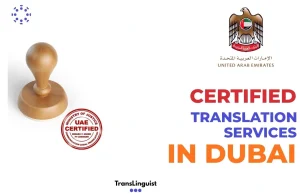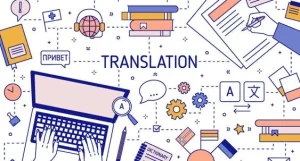Legal translations are already complex but when various jurisdictions are involved, they are even more complicated. Different jurisdictions have their legal systems and terminologies by their own cultures, requiring translators to possess language expertise of both source and target countries and in-depth knowledge of different legal systems involved.
This blog will highlight the seven best practices for translating legal documents across multiple jurisdictions to ensure that legal translations remain accurate and precise when dealing with multiple legal systems.
1. Understanding the Culture and Legal Systems Involved
Every country has its legal system regardless of the law, whether it is civil or common law. A translator, therefore, must have sound knowledge of the cultural and legal differences in these countries. The translator must be aware of these distinctions to ensure the document remains valid and legally enforceable in all countries involved.
If a translator fails to provide accurate translations based on the incapability arising from the knowledge deficit as mentioned above, it can lead to misunderstandings hence, leading to consequential outcomes.
In our previous blog on How Legal Translation Errors Can Impact Court Cases, we discussed the significance of cultural context to avoid miscommunications. The same applies here, overlooking cultural differences can lead to confusion, delays, and even legal disputes.
2. Being Aware of Legal Terminology
Legal terminology is very specific and hence similar words in different languages may have different meanings when we talk about it in the legal context. Therefore, it makes it necessary that when legal documents are being translated, they must be accurate and precise concerning the legal terminology.
To cater to this effect efficiently, one of the best practices for translators is to work with legal professionals from different countries to remain aware of the legal terminology, hence, allowing mistakes to be reviewed and therefore, corrections can be made through alternate phrasing.
3. Working with Specialized Legal Translators
When legal translations are involved, a translator for general translations is not enough. It is necessary to work with specialized legal translators who are trained, certified, and experienced in working with the jurisdiction involved.
A professional expert translator who possesses sound knowledge of both the languages involved along with the knowledge of the legal systems involved ensures that no legal meanings are lost while the intent is maintained.
At TransLinguist, our team of expert legal translators has professional expertise in handling complex documents involving multiple legal systems. Every detail matters when it comes to legal translations, and we work professionally to ensure precision and accuracy across all jurisdictions are maintained.
4. Being Consistent in Terminology
One of the most challenging aspects when it comes to the translation of legal documents across multiple countries is to be able to maintain consistency in terminology. Legal terminology is different in different countries but it is necessary to ensure consistency throughout these terms to ensure there is no confusion in the future.
A professional glossary of terms may be used to ensure that this consistency is achieved in every country. This is to ensure that all parties have understood what is being conveyed.
Consistency ensures that the legal process is streamlined especially when documents are being reviewed by various multiple legal experts from different countries.
5. Ensuring Legal Equivalence
When legal documents are translated literally, they may not hold the same value as that of a legal one. Legal equivalence refers to the translation of a document being in the right context carrying the same legal value as the original intent.
For this to be smooth, experts require in-depth knowledge of both the legal terminology as well as how they are interpreted in each country. The translator must focus on that the intent of the original legal documents is conveyed as originally intended.
6. Collaborating with Local Legal Experts
The knowledge that is possessed by the local legal experts is invaluable and therefore, can be used by translators through collaboration with them. This collaboration can lead to improved results in legal translations ensuring them to remain accurate and legally enforceable.
7. Proofreading and Reviewing with Legal Teams
It is important to review and proofread the translation after it has been completed by the legal teams from all the countries that are involved. Proofreading ensures the accuracy, and clarity of the document for it to hold up to its value in the legal context.
Legal teams are required to not just review the language but also the legal context and implications associated with the translated text to ensure the original intent has been conveyed accordingly.
Why TransLinguist?
Translation of legal documents has been a highly complex task requiring in-depth knowledge of both the laws and the languages involved. At TransLinguist, we provide our clients with the best team brought together consisting of professional and certified legal translators who ensure the provision of accurate, culturally appropriate, and legal, ly sound translations across all relevant countries involved.
Costly mistakes in legal translations are risky—contact us to learn more about how we can help you overcome legal slation complications across countries!



